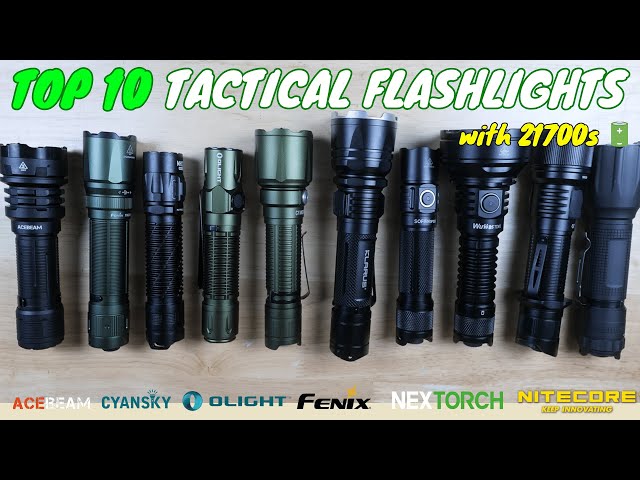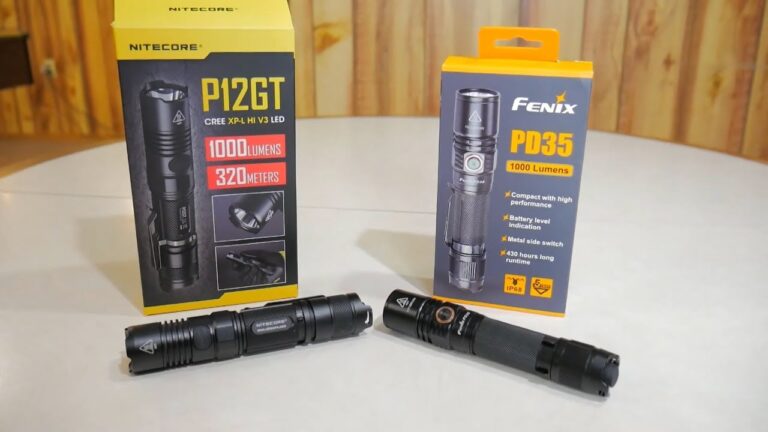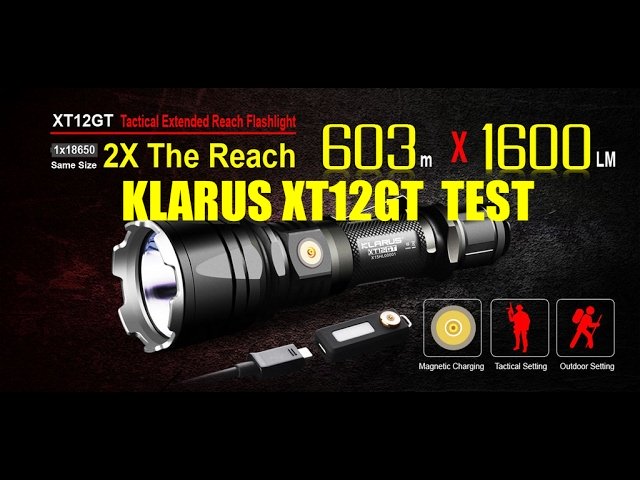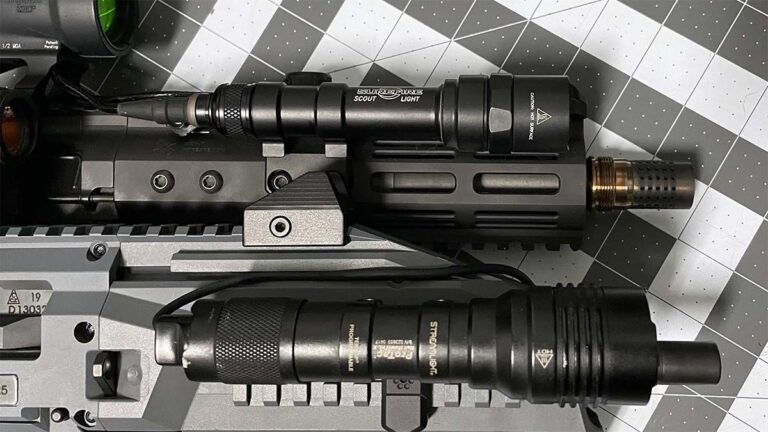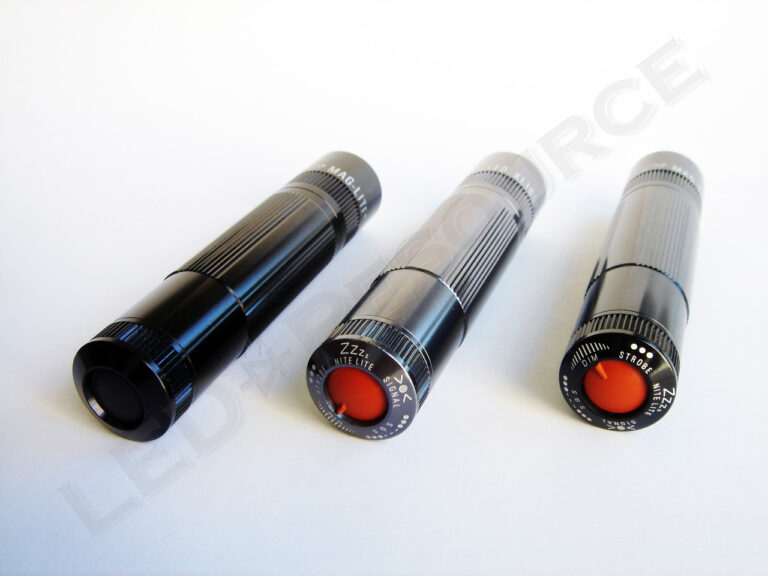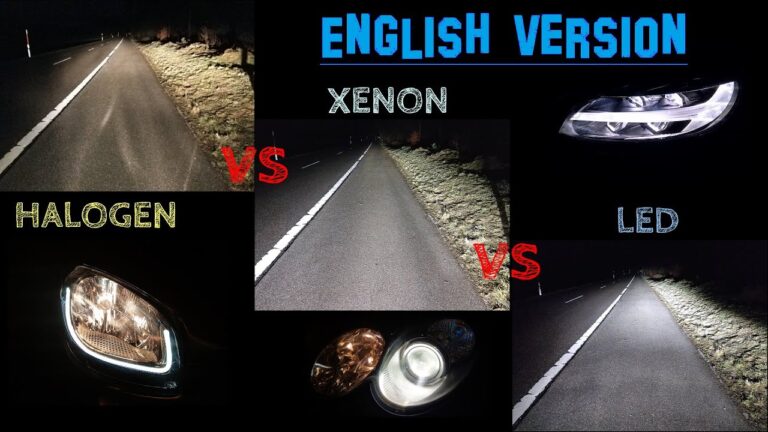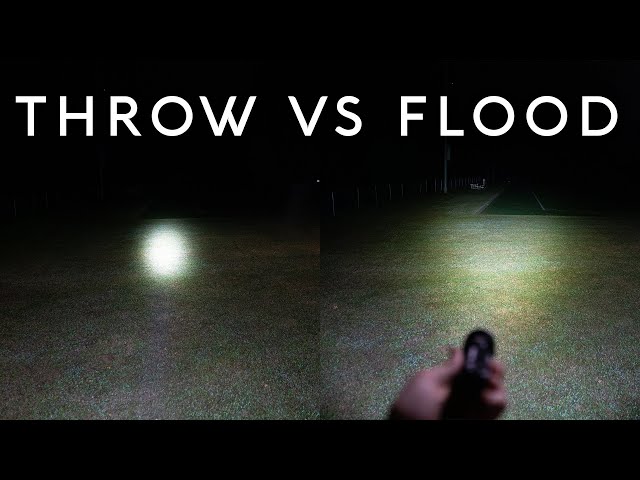Fenix vs Klarus Flashlights: Which is Best for You?
In this article, we will compare two leading flashlight brands, Fenix and Klarus, to determine which offers the best options for consumers looking for reliable, high-performance flashlights. Both brands are known for their innovative designs and quality, but they cater to slightly different markets and user preferences.
We will examine key aspects such as design, performance, battery technology, features, price points, and user feedback to help you make an informed decision. Whether you’re an outdoor enthusiast, a tactical professional, or just someone needing a reliable flashlight for everyday use, this guide will provide you with the essential information you need to choose the right flashlight for your needs.
Table of Contents
- Brand Overview
- Design and Build Quality
- Performance Specifications
- Battery Technology
- Features and Functionality
- Price and Value
- Customer Feedback and Reviews
- Best Use Cases
- FAQ
- Conclusion
Brand Overview
This section will introduce both Fenix and Klarus, discussing their history, market presence, and reputation in the flashlight industry.
History of Fenix
Founded in 2004, Fenix Lighting is a prominent player in the flashlight market, known for its focus on high-quality LED flashlights. The brand has earned a reputation for durability and performance, making it a favorite among outdoor enthusiasts and professionals alike.
Fenix is recognized for pioneering various flashlight technologies, including USB-rechargeable batteries and high-performance LED modules.
History of Klarus
Klarus was established in 2011 and quickly gained recognition within the tactical flashlight sector. The brand is known for its innovative dual-switch design, which allows for quick access to different lighting modes, making them ideal for tactical applications.
Klarus has established a strong presence in over 100 countries, catering to law enforcement and military professionals.
Market Position and Recognition
Both Fenix and Klarus are regarded as leaders in their respective niches, with Fenix often praised for its rugged outdoor flashlights, while Klarus is recognized for its tactical lights. They both emphasize quality, performance, and user-friendly features, appealing to a wide range of consumers.
Their commitment to innovation keeps them at the forefront of the flashlight industry.
| Brand | Year Founded | Notable Products | Market Presence |
|---|---|---|---|
| Fenix | 2004 | Fenix PD35, TK series | Global presence in outdoor and consumer markets |
| Klarus | 2011 | Klarus XT series, G series | Strong presence in tactical and law enforcement sectors |
The table above highlights the foundational years, notable products, and market presence of both Fenix and Klarus. Fenix’s long-standing history since 2004 has allowed it to establish a wide range of products popular among outdoor enthusiasts, such as the Fenix PD35 and TK series.
In contrast, Klarus, though newer, has quickly made a name for itself with innovative designs aimed at tactical users, showcasing products like the XT series. Both brands have carved out significant niches in the flashlight market, catering to different user needs.
Design and Build Quality
Explore the differences in design philosophy and build quality between Fenix and Klarus flashlights, including materials used and durability ratings.
Materials Used
Fenix flashlights are predominantly constructed from aerospace-grade aluminum, providing excellent durability and lightweight characteristics. Klarus also uses high-quality materials, including aluminum and stainless steel, to enhance the durability and performance of their flashlights.
Both brands focus on using materials that ensure longevity and resistance to wear and tear.
Durability and IP Ratings
Both brands offer flashlights with high ingress protection (IP) ratings. Fenix models often come with IP68 ratings, which means they are dust-tight and can withstand submersion in water up to 2 meters for 30 minutes.
Klarus flashlights similarly feature high IP ratings, often achieving IPX8, which indicates waterproof capabilities. This makes both brands suitable for outdoor use in various environmental conditions.
Aesthetic Design Features
Fenix is known for its sleek and functional designs, often incorporating a minimalist aesthetic with user-friendly interfaces. Klarus, on the other hand, has a more tactical look, emphasizing features like dual-switch designs that enhance usability in high-pressure situations.
The ergonomic designs from both brands allow for comfortable handling during extended use.
| Brand | Materials | Durability (IP Rating) | Aesthetic Features |
|---|---|---|---|
| Fenix | Aerospace-grade aluminum | IP68 | Sleek, minimalist design |
| Klarus | Aluminum and stainless steel | IPX8 | Tactical, rugged look |
This table summarizes the materials, durability features, and aesthetic designs of both brands. Fenix’s use of aerospace-grade aluminum combined with its IP68 rating emphasizes its commitment to durability and performance in outdoor settings.
The sleek design is complemented by functional aspects that appeal to a broad audience. Conversely, Klarus combines aluminum and stainless steel, providing a robust feel, particularly favored by tactical users.
The tactical design elements, including dual-switch functionality, cater to those needing quick access and operational efficiency in high-stress environments.
Performance Specifications
Analyze the performance specifications, including brightness levels (lumens), beam distance, and runtime for various models from both brands.
Brightness Levels
Both Fenix and Klarus offer a wide range of brightness levels across their product lines. Fenix’s flagship models can reach outputs of up to 3000 lumens, while Klarus offers models that exceed 4000 lumens, such as the XT21X Pro.
This impressive lumen output ensures that users have the necessary brightness for any situation, whether it’s outdoor exploration or tactical operations.
Beam Distance
Fenix models typically provide excellent beam distances, with flagship models like the TK35 reaching up to 400 meters. Klarus flashlights also boast impressive reach, with models like the XT12GT Pro achieving distances of 850 meters.
This makes both brands suitable for long-range visibility during outdoor adventures or tactical uses.
Runtime Comparisons
Runtime is a critical factor for flashlight users. Fenix flashlights often emphasize longer runtimes; for example, the Fenix E35 V3.0 can run for up to 60 hours on lower settings.
Klarus models also offer impressive runtimes, with some capable of lasting several hours on high settings. However, the actual runtime can vary significantly based on the mode used and the battery capacity of the flashlight.
| Model | Max Lumens | Beam Distance (m) | Runtime (High Mode) |
|---|---|---|---|
| Fenix TK35 | 3000 | 400 | 2h 15m |
| Klarus XT21X Pro | 4400 | 336 | 3h 30m |
This table illustrates the performance specifications for flagship models from both brands. The Fenix TK35 offers a high lumen output of 3000, with a beam distance of 400 meters, showcasing its effectiveness for outdoor activities.
In contrast, the Klarus XT21X Pro provides an impressive 4400 lumens but with a slightly shorter beam distance of 336 meters. This indicates that while Klarus excels in brightness, Fenix offers a longer throw, which is essential for specific outdoor and tactical applications.
Furthermore, the runtimes show that both brands are capable of sustaining their output for extended periods, though the actual usage may vary with settings and battery types.
Battery Technology
Review the battery technologies used in Fenix and Klarus flashlights, discussing rechargeable options, battery life, and user-replaceable batteries.
Types of Batteries Used
Fenix primarily utilizes 18650 and 21700 lithium-ion batteries across its product range. These batteries offer high energy density and are rechargeable, making them suitable for high-performance flashlights.
Klarus also employs 18650 and 21700 batteries, emphasizing user-friendly features such as USB-C charging in many of its models.
Charging Options
Fenix flashlights have integrated charging options in several models, allowing users to recharge their batteries directly through USB-C ports. Klarus follows suit with many of its models featuring USB-C charging capability, ensuring convenient recharging without removing the battery.
Battery Lifespan and Maintenance
Both brands emphasize the importance of battery maintenance for optimal performance. Fenix recommends recharging their batteries every few months if not in use, while Klarus provides guidelines for maintaining battery health.
The lifespan of these lithium-ion batteries can often exceed 500 charge cycles, depending on usage and care.
| Brand | Battery Types | Charging Options | Battery Lifespan |
|---|---|---|---|
| Fenix | 18650, 21700 | USB-C charging | 500+ cycles |
| Klarus | 18650, 21700 | USB-C charging | 500+ cycles |
This table summarizes the battery technologies and charging options available in Fenix and Klarus flashlights. Both brands utilize high-capacity lithium-ion batteries (18650 and 21700), ensuring that users benefit from high performance and decent runtimes.
The inclusion of USB-C charging in both brands highlights a modern approach to convenience, allowing users to recharge without removing the battery. Additionally, the specified battery lifespan of over 500 charge cycles indicates both brands’ commitment to providing durable and long-lasting products, making them reliable choices for users who demand consistent performance.
Features and Functionality
Highlight the innovative features offered by both brands, including user interfaces, special modes (strobe, SOS), and any unique functionalities.
User Interface Design
Fenix flashlights often feature a single switch user interface, making it easy to operate even in challenging conditions. Klarus, however, is known for its dual-switch design, allowing users quick access to different modes, which is particularly beneficial for tactical applications.
Special Lighting Modes
Both brands include various special lighting modes such as strobe and SOS. Fenix models provide straightforward access to these modes through their user interface.
Klarus’s dual-switch design enables quick toggling between modes, which can be critical in emergency scenarios.
Additional Features (e.g., waterproofing, impact resistance)
Fenix and Klarus both offer flashlights with excellent waterproofing and impact resistance ratings. Most Fenix models boast IP68 ratings, while Klarus models typically achieve IPX8 ratings.
This makes both brands ideal for outdoor use, ensuring reliability in harsh conditions.
| Brand | User Interface | Special Modes | Additional Features |
|---|---|---|---|
| Fenix | Single switch | Strobe, SOS | IP68 waterproof, impact resistant |
| Klarus | Dual-switch | Strobe, SOS | IPX8 waterproof, impact resistant |
The table above outlines the features and functionalities of Fenix and Klarus flashlights. Fenix’s single-switch design is user-friendly, making it suitable for various users, while Klarus’s dual-switch interface caters to those needing rapid mode changes.
Both brands offer similar special modes, ensuring versatility in different situations. The waterproofing and impact resistance ratings highlight both companies’ focus on durability, making their flashlights reliable in adverse conditions.
Overall, users can choose between a simpler interface or a more tactical approach, depending on their specific needs.
Price and Value
Compare the price ranges of Fenix and Klarus flashlights and evaluate their value based on features and performance.
Price Range of Fenix Models
Fenix flashlights typically range from $30 for compact models to over $200 for high-end tactical models. This price range accommodates various budgets, with options for both casual users and professionals needing high-performance flashlights.
Price Range of Klarus Models
Klarus models also span a similar price range, with many tactical lights available for under $100. Their flagship models can exceed $200, reflecting the advanced features and high output capabilities.
Value for Money Analysis
Both brands offer excellent value for money based on their build quality, performance, and features. Fenix is often seen as the go-to brand for outdoor enthusiasts, while Klarus provides tactical users with reliable and innovative designs.
Customers can expect to receive high performance and durability from both brands, justifying their price points.
| Brand | Price Range | Average Price | Value for Money |
|---|---|---|---|
| Fenix | $30 – $200+ | $80 | High quality, durable, versatile |
| Klarus | $25 – $200+ | $70 | Innovative, tactical-focused, reliable |
The comparison table illustrates the price ranges and value propositions of both brands. Fenix’s pricing strategy reflects its focus on outdoor and high-performance applications, while Klarus maintains competitive pricing, particularly in the tactical flashlight segment.
With average prices suggesting a slight edge for Fenix, the real difference lies in user preference—whether one prioritizes rugged outdoor performance or tactical versatility. Both brands deliver exceptional value, ensuring that customers are equipped with reliable lighting solutions.
Customer Feedback and Reviews
Analyze customer feedback on both brands, discussing common praises and complaints to understand user satisfaction.
Positive Feedback
Customers generally praise Fenix for its durability and high light output. Many users appreciate the simplicity of the user interface, making these flashlights suitable for both beginners and experienced users.
Klarus users often highlight the practicality of the dual-switch design, which allows for quick mode changes during critical situations, making them ideal for tactical use.
Common Complaints
Some Fenix users express disappointment regarding the lack of a battery level indicator, which can lead to unexpected power loss. Additionally, certain models have been criticized for their weight, which might be a concern for those seeking ultra-light options.
Klarus users sometimes mention that while the dual-switch design is beneficial, it can also lead to accidental activation if not handled carefully.
Overall Customer Ratings
Both brands receive high ratings across major review platforms, often averaging around 4.5 out of 5 stars. Customer loyalty is strong for both Fenix and Klarus, indicating satisfaction with their products and overall brand trust.
| Brand | Positive Feedback | Common Complaints | Overall Rating |
|---|---|---|---|
| Fenix | Durability, high output, user-friendly | No battery indicator, weight | 4.5/5 |
| Klarus | Quick mode changes, tactical design | Accidental activation | 4.5/5 |
This feedback table captures the sentiments shared by users of both flashlight brands. Positive feedback for Fenix emphasizes its robust design and user-friendly operation, which resonate with outdoor users.
However, the lack of a battery level indicator is a notable drawback, impacting user experience. Klarus’s tactical design receives commendations for its rapid usability in high-stress situations, but accidental activation remains a concern for some users.
Overall, both brands maintain strong customer satisfaction ratings, showcasing their commitment to quality and performance.
Best Use Cases
Discuss the ideal use cases for Fenix and Klarus flashlights, helping readers decide which brand fits their specific needs.
Best for Tactical Use
Klarus flashlights, particularly models like the XT11GT Pro and XT21X Pro, are designed with tactical applications in mind. The dual-switch functionality allows for seamless operation during critical situations, making them ideal for law enforcement and military personnel.
Their high lumen outputs and durability also make them suitable for self-defense and emergency scenarios.
Best for Everyday Carry
Fenix flashlights, such as the E05R and PD35, are perfect for everyday carry due to their compact designs and impressive performance. They provide sufficient brightness for routine tasks while being small enough to fit in pockets or bags.
Their user-friendly interfaces also cater well to casual users who need reliable lighting without complicated operations.
Best for Outdoor Activities
Both brands excel in outdoor environments, but Fenix lights, in particular, are popular among hikers, campers, and outdoor enthusiasts. Their rugged designs and high-quality constructions, along with impressive beam distances, make them perfect for navigating trails at night or conducting searches in low-light conditions.
Klarus models also serve well in outdoor settings, especially for users needing tactical capabilities.
| Use Case | Recommended Brand | Recommended Models |
|---|---|---|
| Tactical | Klarus | XT11GT Pro, XT21X Pro |
| Everyday Carry | Fenix | E05R, PD35 |
| Outdoor Activities | Fenix | TK35, PD36R |
This table provides a clear overview of the best use cases for both Fenix and Klarus flashlights. Klarus emerges as the preferred choice for tactical needs, with models specifically designed for law enforcement and military settings.
On the other hand, Fenix is the go-to brand for everyday carry and outdoor activities, with a variety of models that cater to both casual users and outdoor enthusiasts. By understanding these use cases, users can make informed decisions based on their specific requirements.
FAQ
- What are the main differences between Fenix and Klarus flashlights?
The main differences between Fenix and Klarus flashlights lie in their design philosophy and user interface. Fenix offers a more straightforward single-switch design, focusing on durability and ease of use.
Klarus, on the other hand, features a dual-switch design that allows for quicker access to different lighting modes, catering specifically to tactical users. Additionally, Fenix models often emphasize long-range performance, while Klarus models excel in brightness output and operational efficiency.
- Which brand offers better battery life?
Both Fenix and Klarus provide impressive battery life across their product ranges, with both brands using high-capacity lithium-ion batteries. However, battery life can vary significantly based on usage and specific models.
Fenix models like the E35 V3.0 can last up to 60 hours on lower settings, while Klarus models, such as the XT21X Pro, also offer extended runtimes on high performance. Ultimately, the choice may depend on the individual model’s specifications and the user’s needs.
- Are Fenix flashlights waterproof?
Yes, many Fenix flashlights are waterproof, with most models featuring an IP68 rating. This means they are dust-tight and can be submerged in water up to 2 meters for 30 minutes without damage.
This makes Fenix flashlights suitable for various outdoor activities, ensuring reliability in wet conditions.
- Can I replace the batteries in Klarus flashlights?
Yes, many Klarus flashlights use rechargeable lithium-ion batteries, such as the 18650 or 21700 models, which are user-replaceable. This allows users to easily change batteries when needed, ensuring extended use without the need for built-in batteries that cannot be replaced.
- What are the most popular models from Fenix and Klarus?
Some of the most popular models from Fenix include the Fenix PD35 and TK35, known for their durability and high performance. For Klarus, models like the XT11GT Pro and XT21X Pro are favored for their tactical features and brightness levels.
Both brands have established a loyal customer base due to their reliability and quality.
The main differences between Fenix and Klarus flashlights lie in their design philosophy and user interface. Fenix offers a more straightforward single-switch design, focusing on durability and ease of use.
Klarus, on the other hand, features a dual-switch design that allows for quicker access to different lighting modes, catering specifically to tactical users. Additionally, Fenix models often emphasize long-range performance, while Klarus models excel in brightness output and operational efficiency.
Both Fenix and Klarus provide impressive battery life across their product ranges, with both brands using high-capacity lithium-ion batteries. However, battery life can vary significantly based on usage and specific models.
Fenix models like the E35 V3.0 can last up to 60 hours on lower settings, while Klarus models, such as the XT21X Pro, also offer extended runtimes on high performance. Ultimately, the choice may depend on the individual model’s specifications and the user’s needs.
Yes, many Fenix flashlights are waterproof, with most models featuring an IP68 rating. This means they are dust-tight and can be submerged in water up to 2 meters for 30 minutes without damage.
This makes Fenix flashlights suitable for various outdoor activities, ensuring reliability in wet conditions.
Yes, many Klarus flashlights use rechargeable lithium-ion batteries, such as the 18650 or 21700 models, which are user-replaceable. This allows users to easily change batteries when needed, ensuring extended use without the need for built-in batteries that cannot be replaced.
Some of the most popular models from Fenix include the Fenix PD35 and TK35, known for their durability and high performance. For Klarus, models like the XT11GT Pro and XT21X Pro are favored for their tactical features and brightness levels.
Both brands have established a loyal customer base due to their reliability and quality.
Conclusion
In conclusion, both Fenix and Klarus produce high-quality flashlights that cater to different preferences and uses. By examining their design, performance, battery technologies, and user feedback, we can see that each brand has its strengths.
Fenix may appeal more to those seeking rugged durability and extensive features, while Klarus offers innovative designs and tactical functionalities. Ultimately, your choice will depend on your specific needs and budget, but both brands stand out in the market for their commitment to quality and performance.

